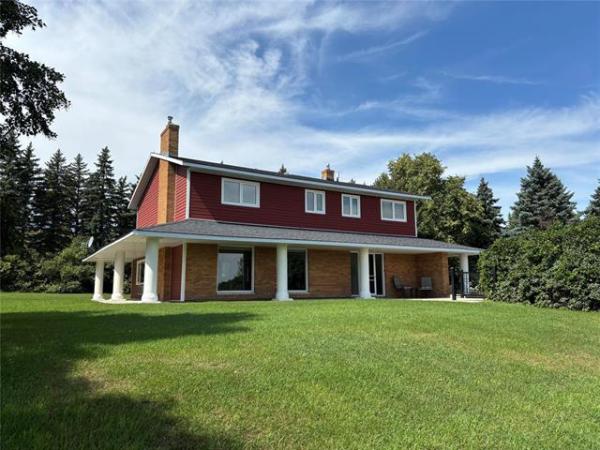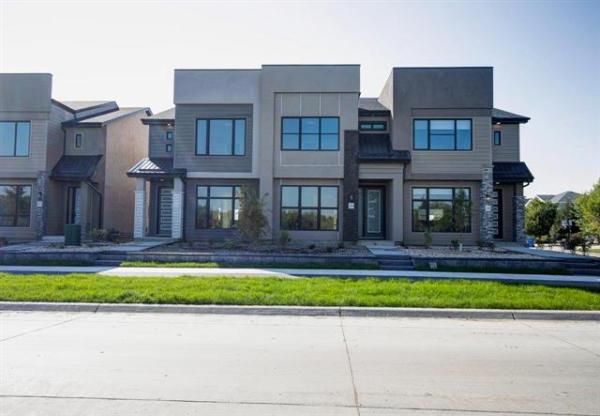Question: Should I install a sump pump in my crawlspace for a house I’m building in Gimli? I’m concerned about the possibility of an issue with the sump pump while I’m away from the house for a long period of time. I hope you have a good day.
Karen G.
Answer: You should absolutely install a sump pump in the crawlspace, whether you are planning on installing a weeping tile system, or not. Concern about an issue while you are not occupying the house can easily be solved, with a little extra work and expense.
Almost any home with a crawlspace, rather than a typical concrete foundation and basement, has the likelihood of moisture intrusion. That is because the open floor of the crawlspace may be near or below grade. Even with a proper concrete footing and grade beam foundation and/or concrete piers, the soil inside the crawlspace may be at risk of absorbing significant amounts of moisture from around the home. The current spring weather is an excellent example, where many yards have large puddles or standing water at the present time. That is due to the abnormally high amount of rain we have experienced in the last month and the large amount of runoff from the heavier than average snow cover. That has caused a situation where the soil may be completely saturated, and possibly still frozen deep down. Those environmental factors have prevented normal moisture absorption by the soil and undoubtedly contributed to a large number of wet basements and crawlspaces.
The concern with prolonged moisture in the crawlspace is the effects on the floor structure and the possibility of mould growth. If a crawlspace gets wet due to seepage from the soil surrounding the house, and does not quickly dry out, the high humidity can cause fungi to grow. These can range from various moulds in the air and soil, but can also include wood rot. If the wooden floor joists and beams start to develop surface rot, and remain in a damp environment, major structural damage can occur. If the rot becomes extensive enough, main beams and joists may have to be removed and replaced. That will be a huge inconvenience and expense that no new homeowner wants to deal with. It may take several years, or even decades, for that to develop in a damp crawlspace but installing a proper drainage system, and proper ventilation, can totally prevent that from occurring.
To do the best job possible, your sump pit and pump should be installed with complete perimeter weeping tile outside the foundation. Those perforated plastic pipes will absorb a large amount of moisture from the exterior soil and channel it to the sump, through similar solid-walled extensions in the crawlspace. To work effectively, the sump should be a fair bit lower than the grade outside and the corrugated pipes inside the crawlspace sloped downward toward the sump. In that way, excess moisture immediately adjacent to the foundation will be collected, passively channeled to the sump, and then pumped back outside. This reliable water management system should have good success in maintaining fairly dry soil in the crawlspace. Summer vents, and/or a mechanical ventilation system, should be the final pieces of the dry crawlspace puzzle.
Some consideration should be given to the location of your new home and the soil conditions, before deciding on which way to proceed. That area will normally have some clay-based topsoil near the surface of the ground, but may be quite sandy underneath. The closer to the lake you go, the more likely you will have a higher sand content to the soil. Sand is much better to build on than clay, and will also drain quicker when wet. For that reason, a geotechnical engineer, or experienced builder, should do some soil analysis before deciding on the installation of a weeping tile and sump system.
As far as your concern with pump failure in your absence, there are two main methods of preventing a sump pump failure when you are away from the home. Both can be used together, or either one alone, depending on your preference. The first method is to install a secondary, battery operated pump, inside the sump, in addition to the standard electric model. This will require a connection to a nearby large marine or car battery, which remains constantly charged by an electric slow charger. That way, even if there is a power failure while you are not in the home, the battery pump will run for a significant amount of time to prevent overfilling of the pit.
The second method for flood protection is to install a high-water sensor near the top of the sump. This simple device will send a signal when it becomes wet, which will occur only if the sump pit is overfilled. That can only occur if there is a failure in the pump(s) and an instant notification can be sent to an alarm provider, or to you through a smart home device. That will only work if you have a monitored alarm system installed, or a more modern internet connected device. Either way, someone will be alerted to the failure and a plumber or other contractor can immediately be contacted for a repair before the crawlspace floods.
Installing a sump pit and pump, especially paired with a complete weeping tile system, will be an excellent choice to prevent excessive moisture and damage in the crawlspace of your new home. A simple water sensor installed near the top of the sump, and monitoring system, should easily alert you to a pump failure, or other problem, even when you are miles away from the home.
Ari Marantz is the owner of Trained Eye Home Inspection Ltd. and a Registered Home Inspector (RHI)(cahpi.ca). Questions can be emailed to the address below. Ari can be reached at 204-291-5358 or check out his website at trainedeye.ca.
trainedeye@iname.com



